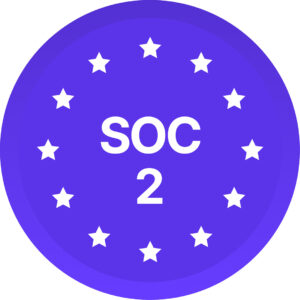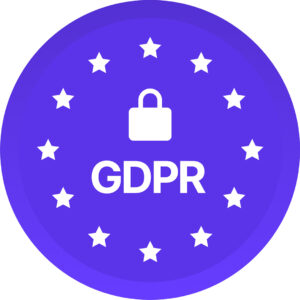Gender and race are only two of many dimensions of diversity in modern business. Employees bring a wide variety of viewpoints, life experiences, and education levels to their jobs. Recognizing and embracing diversity is not just the right thing to do, but also a smart business move that may boost creativity, market share, and bottom line results for CEOs and boards.
This article will explain the various forms of diversity that are changing the way businesses operate. We’ll go over the importance of both our innate and learned characteristics to the fabric of a successful company, and how each contributes to the whole.
As we go through the fundamentals of diversity in the workplace, you will get practical ideas for how your company may value and benefit from the individual variations among its employees. Then let’s get started.
Comprehensive diversity types in the workplace
At its core, workplace diversity includes the full range of characteristics and experiences individuals bring to their professional environment. This consists of the inherent traits that are part of an individual’s makeup, like race and gender, as well as the acquired traits shaped by life experiences.
Inherent diversity types
1) Racial & ethnic diversity: Every individual’s race and ethnicity brings a unique cultural perspective. It’s about more than skin color or heritage; it’s about diverse viewpoints that can lead to a 19% increase in revenue for companies with diverse management teams. It’s how traditional strategies get challenged, and innovation gets a boost from different angles of problem-solving.
2) Gender & sexual orientation diversity: The gender spectrum is broad and acknowledging this can help tap into a vast talent pool. It’s proven that gender-diverse companies are 21% more likely to experience above-average profitability. Embracing sexual orientation diversity means respecting personal identities, translating into a respectful and productive workplace culture.
3) Age diversity: A mix of generations in the workforce brings a dynamic interplay of stability and fresh ideas. Seasoned professionals offer wisdom and time-tested approaches, while younger employees infuse energy and a pulse on the latest trends. Together, they can propel companies to new heights.
4) Physical ability & neurodiversity: Recognizing the talents of individuals across the physical ability spectrum and those with neurodiverse conditions is not just about accessibility but about the unique abilities and perspectives these individuals bring to a team.
5) Physical appearance: Even clothing choices and body types play a role. They’re a part of one’s identity, and when employees feel comfortable in their skin, their confidence and productivity can soar.
Recognizing these inherent diversity types isn’t just good ethics; it’s sound business. It leads to more robust discussions, a deeper understanding of customer bases, and, ultimately, a more robust bottom line.
Acquired diversity types
Acquired diversity reflects the vast array of experiences and skills gathered over a lifetime, shaping how we think, work, and connect with others.
Here’s how these experiences translate into a diverse workforce:
6) Educational & skills diversity: Imagine a team where every diploma tells a different story, each certificate adds a unique skill, and every training session opens a new perspective. This diversity in education and skills fuels a team’s engine, driving innovation and adaptability.
7) Socioeconomic background diversity: Employees from various economic backgrounds enrich a workplace with diverse perspectives on value and resourcefulness, which can pivot a business to resonate with broader audiences.
8) Cultural & language diversity: With each new language spoken in the break room, there’s a door to a unique market opportunity. Cultural and linguistic diversity isn’t just about global reach; it’s about enriched creativity and nuanced problem-solving that can increase a company’s chance to capture new markets by 70%.
9) Professional & industry experience diversity: A spectrum of professional backgrounds, including invaluable insights from veterans, can give your company the edge.
10) Geographic location: The city, suburb, or farm where employees grew up can influence their approach to work. It’s the local flavors that season a company’s global appeal.
11) Work content field & functional level/classification: From the front lines to the corner office, every role offers a window into a different aspect of the business. When these views come together, the picture is complete.
12) Division/department/unit/group affiliation: Each department has its subculture, its way of seeing things. Harnessing these perspectives ensures that every angle is explored.
13) Seniority: The interplay between the fresh perspectives of new employees and the seasoned insights of long-time workers keeps a company growing. It’s the perfect blend of reverence for what works and the audacity to disrupt.
14) Marital & parental status: Life choices, such as being single, married, or a parent, shape individual priorities and viewpoints, adding depth to the collective company perspective.
15) Personal & recreational habits: Employees’ interests, from running marathons to culinary arts, invigorate the workplace with energy and a sense of balance, emphasizing the importance of integrating personal passions with professional roles.
These facets of acquired diversity do not just coexist; they collaborate, creating a workplace symphony that resonates with innovation and unity.
Additional diversity considerations
When we look beyond surface-level workplace diversity, there’s cognitive diversity — the unique ways people think and solve problems. It’s less about what’s on a resume and more about how individuals approach challenges. Such diversity in thinking is linked to a notable uptick in innovation, with some studies suggesting up to a 20% boost in creative output.
Then there’s intersectionality. It recognizes that people aren’t one-dimensional; we’re complex beings with intersecting identities — race, gender, age, class, and so much more. Intersectionality sees the full spectrum of an employee’s life, recognizing someone who juggles roles as a part-time student, a parent, and a digital innovator. This approach enriches a business with profound, lived experiences that traditional metrics might overlook.
Acknowledging and valuing cognitive diversity and intersectionality isn’t just a nice to do; it’s a must-do for any business that aims to stay ahead of the curve.
Measuring and fostering diversity with Diversio
There is more to measuring diversity than just counting the number of various identities present in your firm. The real-life experiences of team members, including their sense of value, their feeling of being heard, and their level of inclusion are all signs of your business’ health.
In order to turn diversity data into actionable insights, Diversio plays the following role:
- DEI data & analytics: Consider this your organization’s health check-up. Diversio’s platform provides a clear snapshot of employee engagement and cultural health without the hassle of manual data sorting. With this information, you can see the numbers and the narratives behind them.
- AI-powered insights: Diversio’s AI tools analyze the diversity data to give you actionable insights. It reveals where your teams are in sync and where you need to adjust the harmony. This goes beyond management—it’s about leadership tuning into a diverse workforce’s frequencies.
- Closing the loop: Post-assessment, the focus shifts to cultivating an inclusive atmosphere. The aim is to convert data-driven insights into inclusive strategies that resonate with the entire team. Diversio provides DEI certifications, allyship and leadership training that go beyond pinpointing areas for improvement; We provide a roadmap for creating tailored action plans that reflect your team’s distinct diversity profile.
By integrating Diversio’s capabilities, you’re equipped to map out the current diversity landscape and cultivate it. It’s about creating a workplace that doesn’t just welcome diversity but thrives on it, ensuring every employee’s potential can be fully realized.
Diversity is a journey of continuous learning.
Acknowledging the full spectrum of diversity within your workforce is a savvy move that propels your business forward.
Here’s the gist: each type of diversity brings a unique strength. Harnessing these strengths requires a comprehensive approach that Diversio understands and can actively support with data and analytics, training, and AI-driven insights.
As the business world evolves, so too should our DEI efforts. It’s a continuous learning and improvement journey, with Diversio as a committed partner. The goal? To build workplaces where diversity is seen, felt, valued, and leveraged for the betterment of all.

